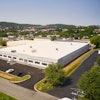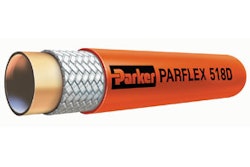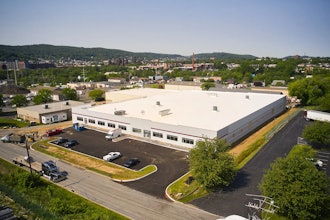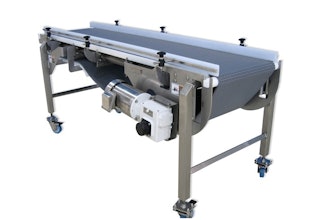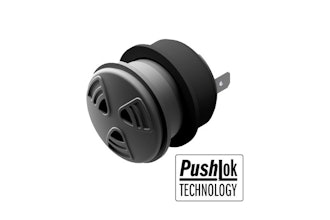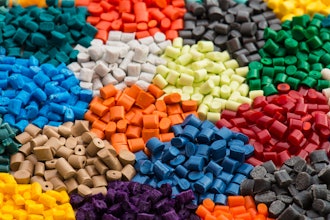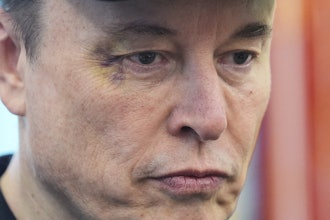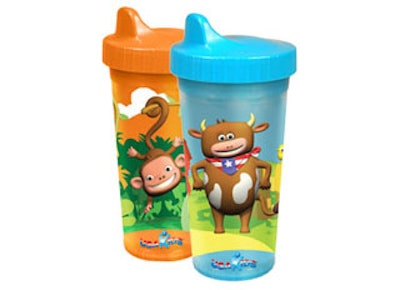
Even with the “Made in the U.S.A.” movement in full swing, the common perception among Americans is that goods made overseas — particularly in countries like China — are undoubtedly cheaper than equivalents built in the U.S. While some might be willing to accept a higher cost at a boutique shop in the effort to support local jobs, a large portion of Americans shop at retail chains like Wal-Mart in order to get more value out of their dollar. Oftentimes, Americans find themselves stuck between a desire to help the U.S. economy and their pocketbook.
So for Capitol Cups, based out of Auburn, Alabama, to say that they can not only compete with their Chinese competitors in the aisles of Wal-Mart — but beat them through innovation — it’s bound to get some attention.
The company, founded in 2003, makes three different product lines: stadium-style plastic cups; insulated cups, which you may have seen on sale at the likes of Dunkin’ Donuts and 7-11; and children’s sippy cups. The last of these, sold under the U.S.A. Kids brand, are the products that can be found in Wal-Marts around the country. According to Tina Belfance, manager of Capitol Cups, these spill-proof plastic cups sell for nearly two dollars less than their Chinese competitors.
Because of this, Belfance doesn’t believe that consumables manufacturing isn’t possible in America. The key, she says, is to innovate early and often. In Capitol Cups’ case, this lead to a quality product at a low cost, which is exactly what a major retailer like Wal-Mart wants to stock on its shelves. Being cheaper than China wasn’t the goal, but it’s certainly a beneficial side effect of the company’s innovative spirit.
The U.S.A. Kids cups were introduced just a little more than a year ago, in January 2011. The company spent a good deal of time doing its research before introducing the product, not only to ensure that they were entering a viable market, but also to develop and perfect the manufacturing process. Their engineering staff developed a new molding technique completely in-house, one that is capable of converting plastic stock into the finished, decorated final product in a single process in a single machine.
Belfance says that a typical cup manufacturing process, on the other hand, involves at least four machines and four separate processes: two injection molding machines, one for the interior cup and another for the exterior; a welding machine that merges the two pieces together; and a decorating device to put on the finishing touches. That workflow might be suitable in a low-cost country like China, but in America, it’s tedious and entirely unnecessary — not to mention expensive. Belfance says, “If your processes are extremely labor-intensive on the manufacturing side, it makes it very difficult to be competitive at a cost standpoint because of wages alone.”
This kind of automation has received some criticism in the past, with detractors saying that streamlined processes are taking jobs from Americans and giving them to robots. That may be true, but the company might not exist if not for their insistence on technical innovation. Belfance says, “We have engineers who are always looking for ways to bring technical innovation to be able to compete. And to be able to keep jobs here in the U.S. and continue to grow our business, and the people we employ.”
The state of Alabama has also had a part in Capitol Cups’ success. The Southeast has received quite a bit of attention lately from manufacturers — notably some big automakers that have located new manufacturing locations there — and for good reason. Belfance says, “The state government does try to bring innovation to our state. When you’re an innovative company that is looking to grow in a certain industry, then they like to try to help get things situated as best as possible to get you to do business in the state of Alabama.” And because Alabama is a right-to-work state, the employees are not involved in any unions.
Belfance is quick to give some specific credit to the city of Auburn as well. Considering the city lies in the middle of what she describes as the remnants of a once-thriving and now-deceased textiles industry, there’s a solid stock of manufacturing employees for them to draw upon as they expand. And if they’re in need of an engineer who knows the latest in automation, there’s new graduates every spring from Auburn University.
Given Belfance’s testimony, it’s clear that matching low-cost countries on price is a combination of innovation, hard work, a business-friendly climate, and, perhaps, a bit of good luck, but she disagrees with the idea that it’s next-to-impossible. In fact, now is a great time to be a manufacturer, even in the consumables market, which many have claimed to be dead in America.
Right now, the general public perception of manufacturing’s future outlook is improved over where it was a few years ago. The mainstream media used to say that American manufacturing was gone, that the jobs would never come back and the nation’s plants were on borrowed time. But that’s changed. Now, they’re all talking about the success of high-tech work, such has CNC machining high-tolerance parts, for example. They’re saying that manufacturing is possible, but only in the industries where American quality is an important asset, and where knowledge reigns supreme.
Based on all this talk, many Americans still believe that consumer goods manufacturing locally is absolutely impossible on price alone. Belfance, clearly, disagrees with that sentiment, saying that Americans are looking for qualities beyond price, such as quality and the desire to make an economic impact here in America — but there’s no denying the low price helps American families. In Capitol Cups’ industry, the quality of the product, and its materials, is paramount, and is one of the ways the company has gotten a leg-up over its foreign competition.
Belfance says, “A lot of plastic that’s been imported [from China] has seen problems with containing BPA and having more harmful products that are leaching out of the plastic.” Capitol Cups, on the other hand, knows they’re using FDA-approved materials that have been tested for safety by a third-party laboratory. “Being able to control that and being able to ensure the product on the shelf is actually safe is one of the big reasons many companies should look at different areas.”
In addition, Capitol Cups boasts its position as the only plastic insulated children's cup made in the U.S. That lack of choice might be disappointing for the average American consumer, but Belfance says the possibilities for more expansion into the Made-in-America movement are ripe to be taken advantage of right now. She says, “There are ways you can compete against the foreign trade and yet be a safer product for Americans.”
Capitol Cups is proving that it’s possible to compete with low-cost manufacturing countries, and not just on the high-tech, high-precision processes that get featured regularly on the mainstream news as the "saviors" of American manufacturing. Just because a company makes a consumable good doesn’t mean that a good deal of innovation went into its making. These days, finding success in American manufacturing is becoming less about what you produce, but rather how and where. And for Capitol Cups, that means quality goods made through innovation out of eastern Alabama.

